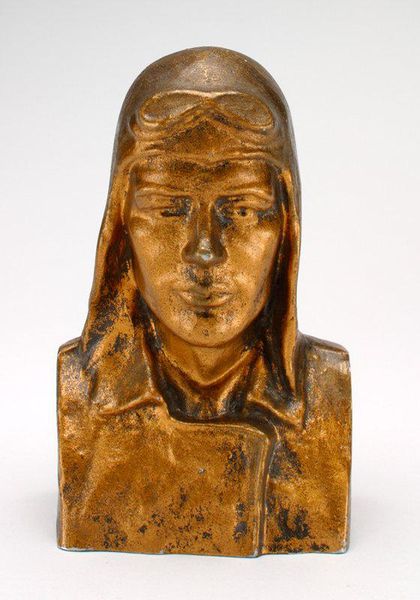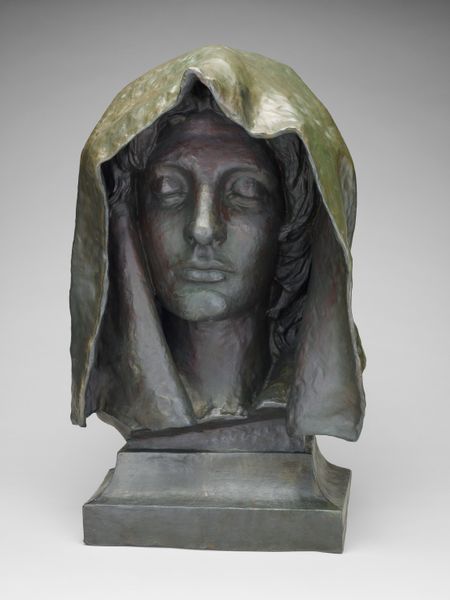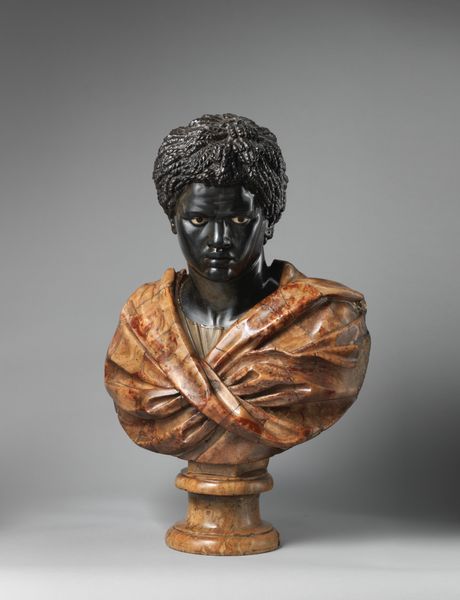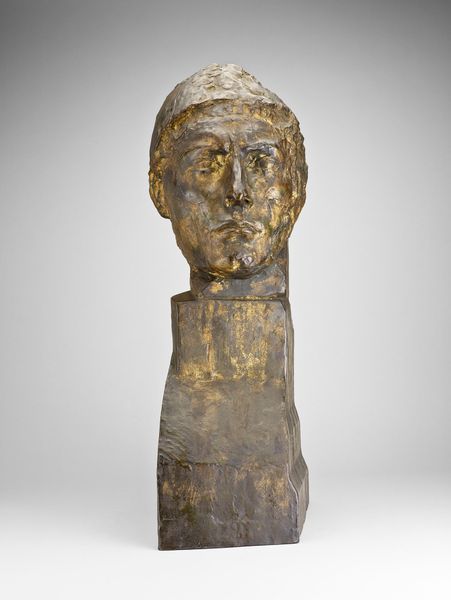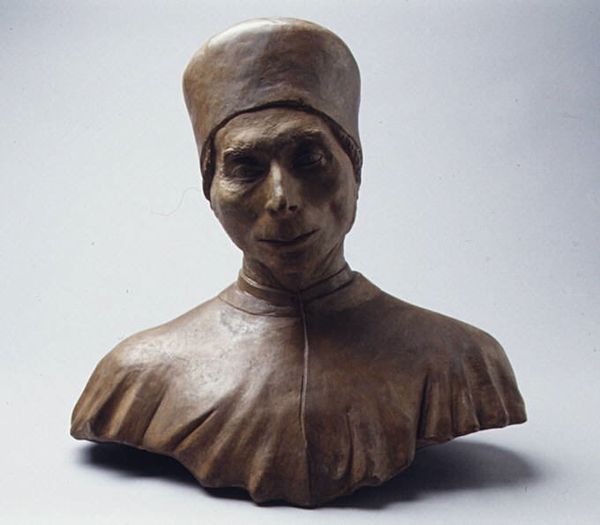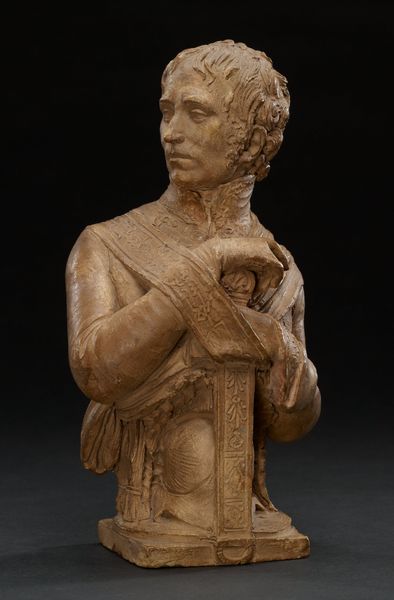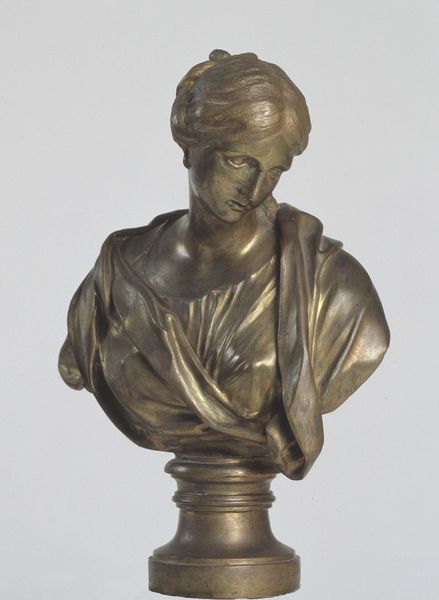
Dimensions: H. 49.5 cm (19 1/2 in.)
Copyright: Public Domain
Editor: Right this way, everyone! We're now face to face with Pietro Calvi's "Female Bust (possibly Aïda)," created around 1875. The cool marble against the darker bronze is quite striking. The woman has such a serene, almost haunting expression. I'm curious, what's your interpretation of this particular work? Curator: Oh, she does haunt, doesn't she? But gently. I see a collision of worlds here. Calvi was, of course, steeped in Neoclassicism, all those clean lines and ideal forms. But he also has this yearning gaze fixed on… somewhere else, somewhere Eastern perhaps? Notice the intricately carved base, quite different from the smooth marble. It is the whisper of the exotic threading its way into the formal portrait. Imagine, if you will, the opera *Aïda* premiered only a few years before. Does it evoke that same bittersweet longing for a distant, perhaps unattainable, world? Editor: That's such an interesting point about the opera! The clash between Neoclassicism and exoticism... do you think that was intentional on Calvi's part, or just a reflection of the times? Curator: Ah, intent! A treacherous word for art historians, isn’t it? I’d argue it’s likely both. Artists don't exist in a vacuum, they breathe the same air we do. Calvi may have been consciously drawn to the operatic character of Aïda or perhaps that influence was more deeply ingrained in his perception. Maybe what he created what he had within his deepest sense. . Editor: I never thought about the influence of opera on sculpture. It certainly adds another layer to appreciating this piece. Curator: Absolutely! And perhaps makes us consider our own place in this exchange between cultures and artistic ideals. Editor: Exactly! This conversation reframed how I perceived this bust, highlighting those contrasts I hadn't fully appreciated before. Thanks for that perspective!
Comments
No comments
Be the first to comment and join the conversation on the ultimate creative platform.

